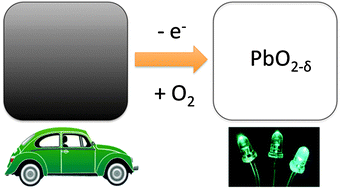PbO2: from semi-metal to transparent conducting oxide by defect chemistry control
Abstract
Lead dioxide has been studied for over 150 years as a component of the lead-acid battery. Based on first-principles calculations, we predict that by tuning the concentration of electrons in the material, through control of the defect chemistry, PbO2 can be rendered from black to optically transparent, thus opening up applications in the field of optoelectronics.


 Please wait while we load your content...
Please wait while we load your content...